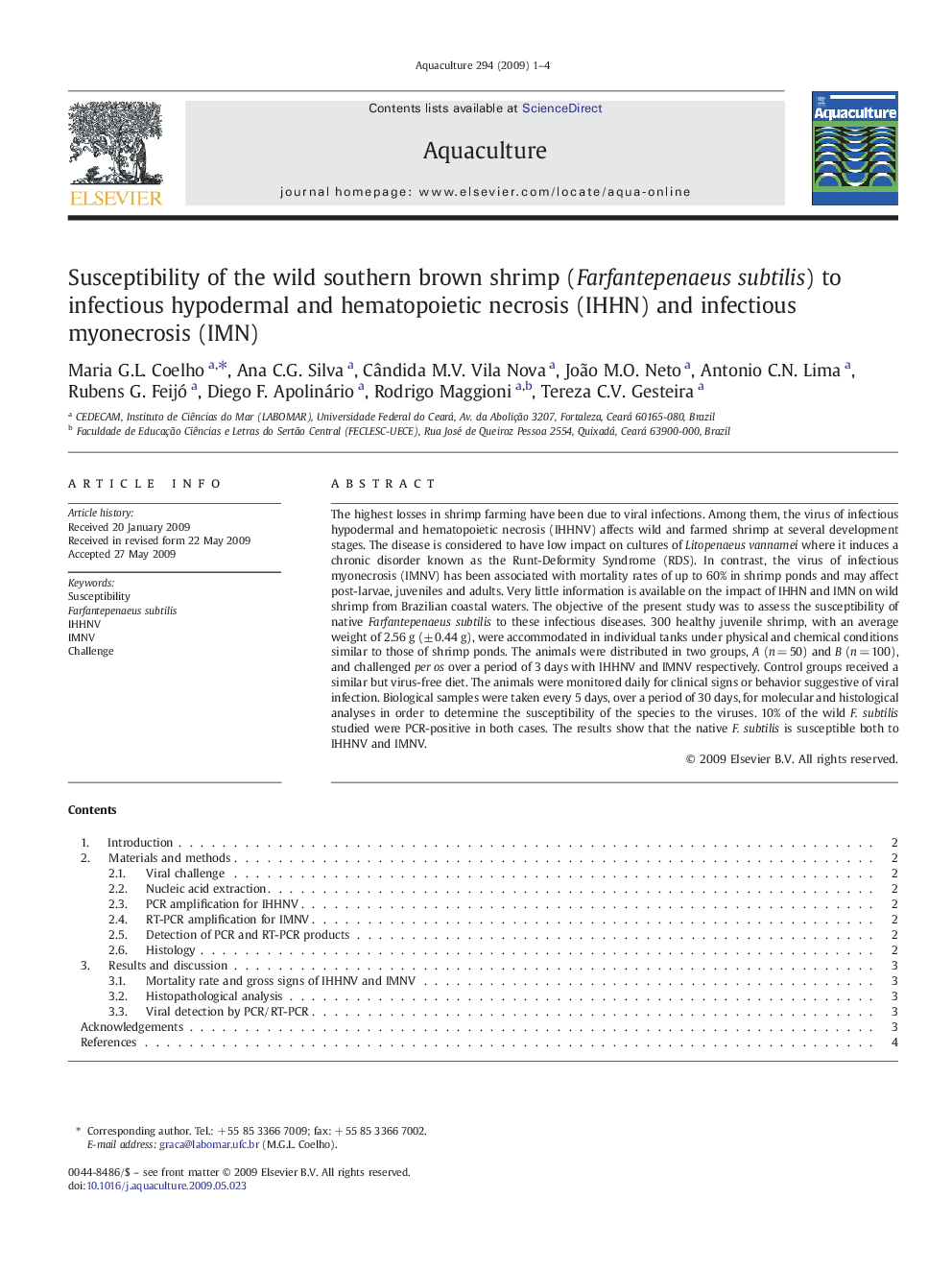| Article ID | Journal | Published Year | Pages | File Type |
|---|---|---|---|---|
| 8496093 | Aquaculture | 2009 | 4 Pages |
Abstract
The highest losses in shrimp farming have been due to viral infections. Among them, the virus of infectious hypodermal and hematopoietic necrosis (IHHNV) affects wild and farmed shrimp at several development stages. The disease is considered to have low impact on cultures of Litopenaeus vannamei where it induces a chronic disorder known as the Runt-Deformity Syndrome (RDS). In contrast, the virus of infectious myonecrosis (IMNV) has been associated with mortality rates of up to 60% in shrimp ponds and may affect post-larvae, juveniles and adults. Very little information is available on the impact of IHHN and IMN on wild shrimp from Brazilian coastal waters. The objective of the present study was to assess the susceptibility of native Farfantepenaeus subtilis to these infectious diseases. 300 healthy juvenile shrimp, with an average weight of 2.56 g (± 0.44 g), were accommodated in individual tanks under physical and chemical conditions similar to those of shrimp ponds. The animals were distributed in two groups, A (n = 50) and B (n = 100), and challenged per os over a period of 3 days with IHHNV and IMNV respectively. Control groups received a similar but virus-free diet. The animals were monitored daily for clinical signs or behavior suggestive of viral infection. Biological samples were taken every 5 days, over a period of 30 days, for molecular and histological analyses in order to determine the susceptibility of the species to the viruses. 10% of the wild F. subtilis studied were PCR-positive in both cases. The results show that the native F. subtilis is susceptible both to IHHNV and IMNV.
Keywords
Related Topics
Life Sciences
Agricultural and Biological Sciences
Aquatic Science
Authors
Maria G.L. Coelho, Ana C.G. Silva, Cândida M.V. Vila Nova, João M.O. Neto, Antonio C.N. Lima, Rubens G. Feijó, Diego F. Apolinário, Rodrigo Maggioni, Tereza C.V. Gesteira,
